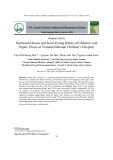Helicobacter pylori and Gastric Cancer: Factors That Modulate Disease Risk
Less than 3 decades ago, Robin Warren and Barry Marshall definitively identified Helicobacter pylori by culturing an organism from gastric biopsy specimens that had been visualized for almost a century by pathologists (196). In 1994, H. pylori was recognized as a type I carcinogen, and now it is considered the most common etiologic agent of infection-related cancers, which represent 5.5% of the global cancer burden (239). In 2005, Marshall and Warren were awarded the Nobel Prize of Medicine for their seminal discovery of this bacterium and its role in peptic ulcer disease




































